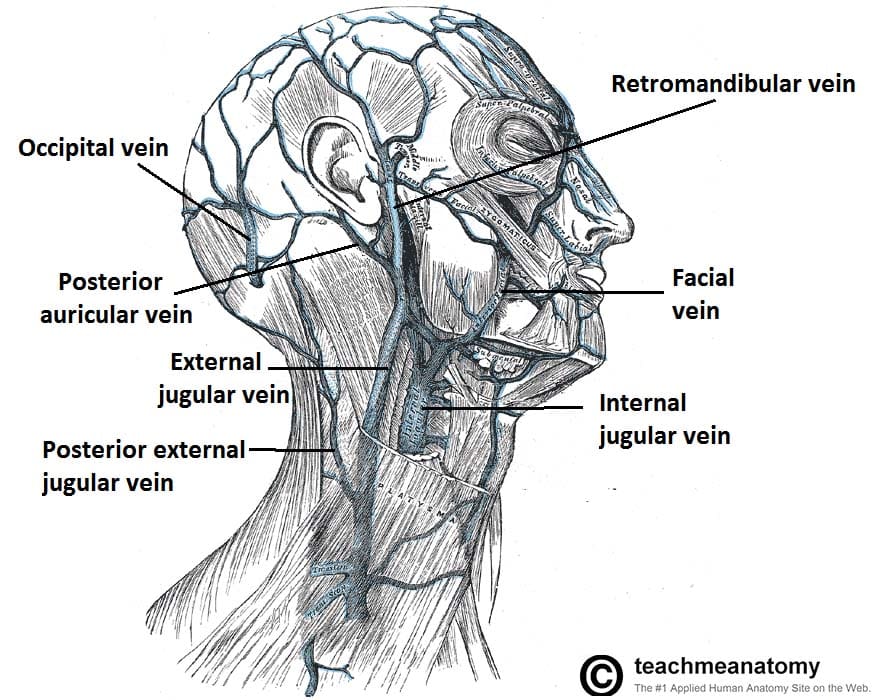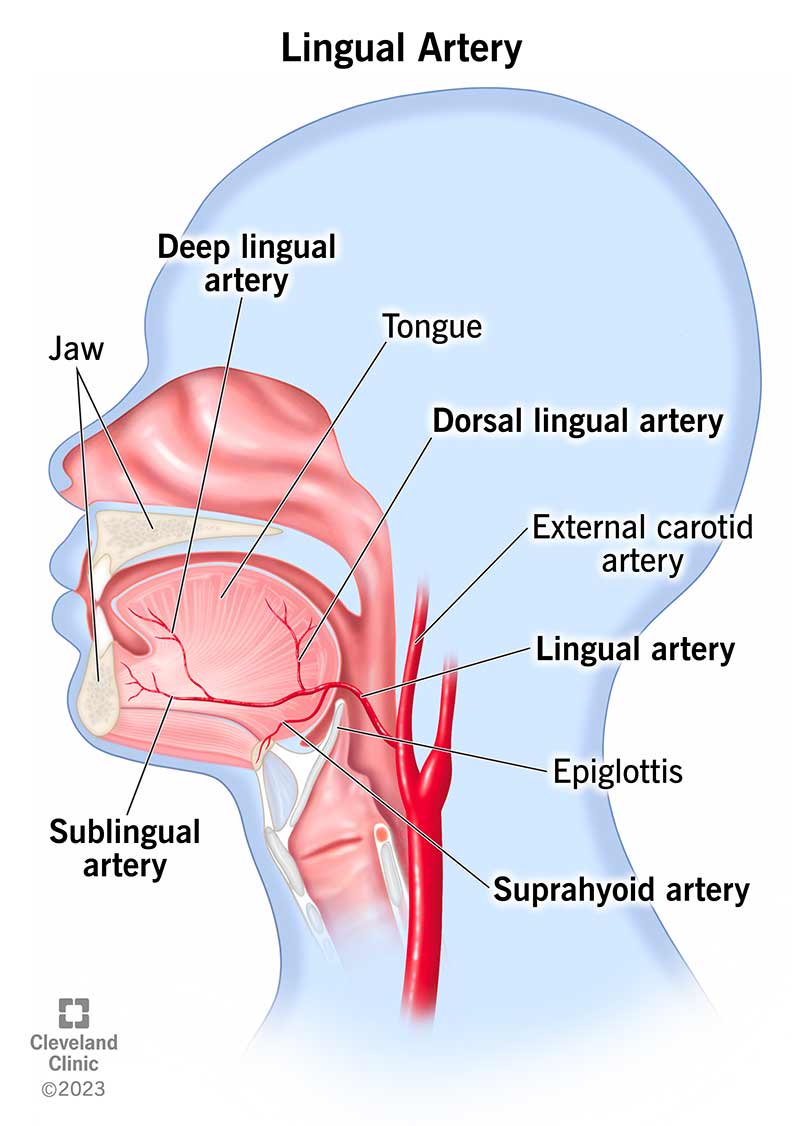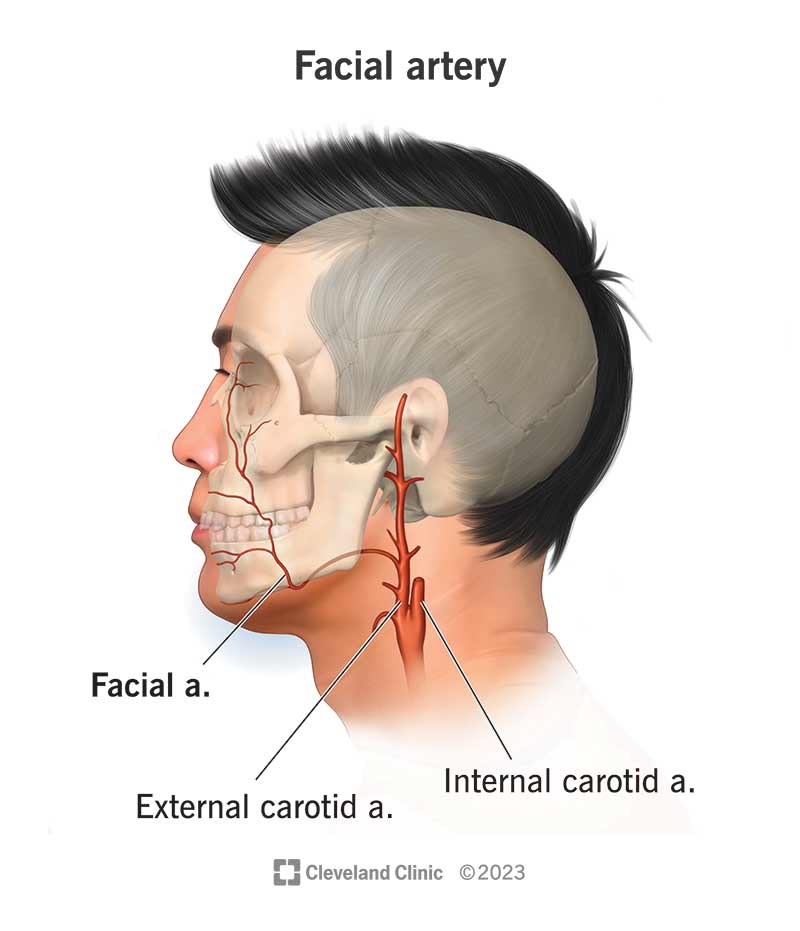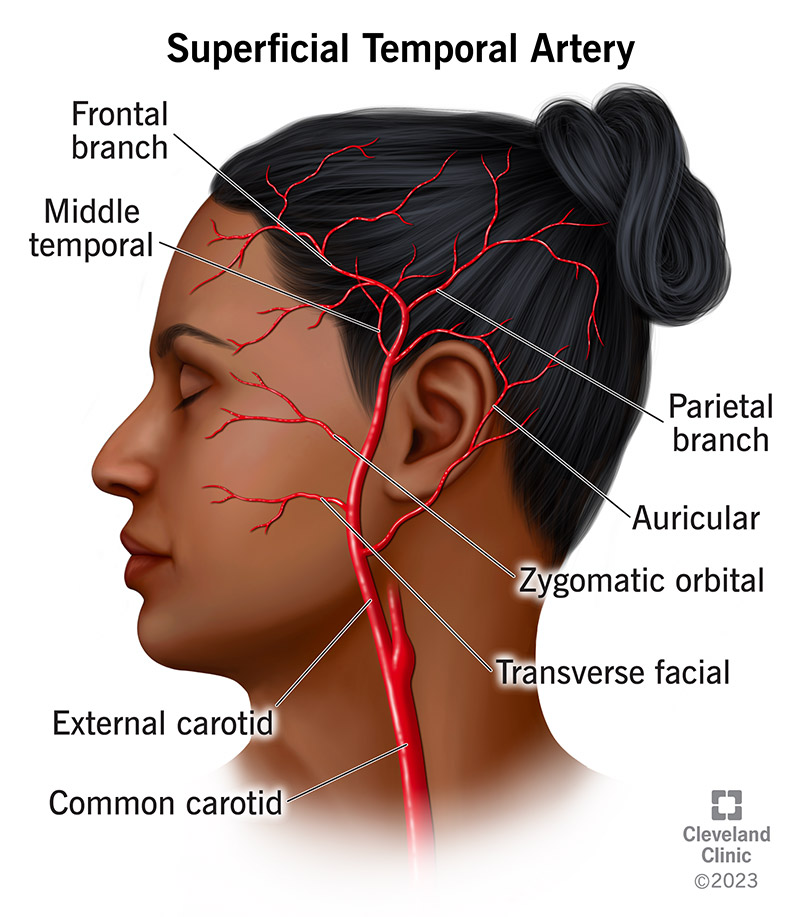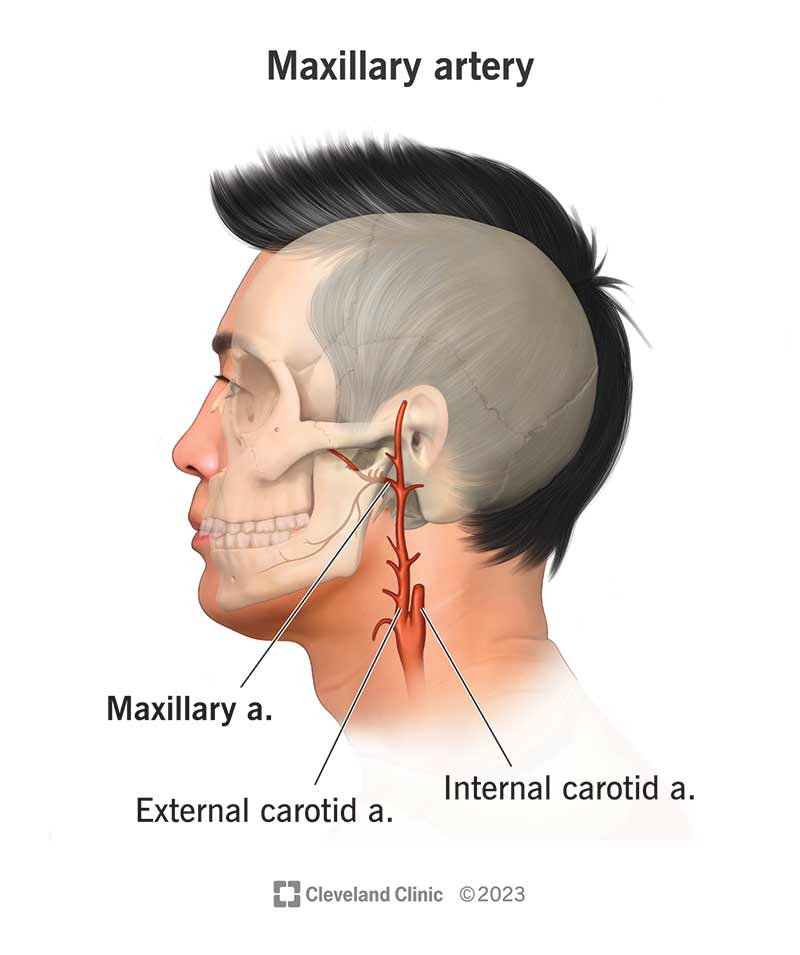Vessels of the Carotid Triangle
Vessels of the Carotid Triangle
1. Sketch and Label a Diagram of the Branches of the External Carotid Artery in the Neck
The external carotid artery (ECA) branches in the neck can be remembered using the mnemonic "Some Angry Ladies Fight Off PMS":
- Superior Thyroid Artery - First branch, supplies the thyroid gland.
- Ascending Pharyngeal Artery - Smallest branch, supplies the pharynx.
- Lingual Artery - Supplies the tongue.
- Facial Artery - Supplies the face, including the muscles of facial expression.
- Occipital Artery - Supplies the posterior scalp.
- Posterior Auricular Artery - Supplies the region around the ear.
- Maxillary Artery - Supplies deep structures of the face, including the maxilla.
- Superficial Temporal Artery - Terminal branch, supplies the scalp in the temporal region.
The diagram should show the external carotid artery ascending from the common carotid artery, with each branch labeled according to its position along the artery.
2. Understand How the Carotid Body and Carotid Sinus Regulate Heart Rate and Blood Pressure
Carotid Body:
- The carotid body is a small cluster of chemoreceptors located at the bifurcation of the common carotid artery, where it divides into the internal and external carotid arteries.
- It detects changes in blood pH, CO2, and O2 levels.
- When low O2 levels or high CO2 levels are detected, the carotid body sends signals to the brainstem to increase respiratory rate and heart rate, improving oxygenation.
Carotid Sinus:
- The carotid sinus is a dilation at the base of the internal carotid artery, just above the bifurcation.
- It contains baroreceptors that sense changes in blood pressure.
- When blood pressure increases, the baroreceptors send signals via the glossopharyngeal nerve (cranial nerve IX) to the brainstem, which then initiates reflexes to lower heart rate and dilate blood vessels, reducing blood pressure.
- Conversely, when blood pressure drops, the opposite effect occurs, with an increase in heart rate and vasoconstriction to elevate blood pressure.
Carotid Body:
- The carotid body is a small cluster of chemoreceptors located at the bifurcation of the common carotid artery, where it divides into the internal and external carotid arteries.
- It detects changes in blood pH, CO2, and O2 levels.
- When low O2 levels or high CO2 levels are detected, the carotid body sends signals to the brainstem to increase respiratory rate and heart rate, improving oxygenation.
Carotid Sinus:
- The carotid sinus is a dilation at the base of the internal carotid artery, just above the bifurcation.
- It contains baroreceptors that sense changes in blood pressure.
- When blood pressure increases, the baroreceptors send signals via the glossopharyngeal nerve (cranial nerve IX) to the brainstem, which then initiates reflexes to lower heart rate and dilate blood vessels, reducing blood pressure.
- Conversely, when blood pressure drops, the opposite effect occurs, with an increase in heart rate and vasoconstriction to elevate blood pressure.
3. Identify the Main Neurovascular, Glandular, or Visceral Structures Within Each Triangle of the Neck
The neck is divided into several triangles by the sternocleidomastoid muscle, each containing key anatomical structures:
Anterior Triangle:
- Subdivisions: Submandibular, submental, carotid, and muscular triangles.
- Main Structures:
- Submandibular Triangle: Submandibular gland, facial artery and vein.
- Carotid Triangle: Common carotid artery, internal jugular vein, vagus nerve (cranial nerve X), hypoglossal nerve (cranial nerve XII), and the carotid sinus.
- Muscular Triangle: Infrahyoid muscles, thyroid and parathyroid glands.
Posterior Triangle:
- Main Structures:
- Spinal Accessory Nerve (Cranial Nerve XI): Innervates the sternocleidomastoid and trapezius muscles.
- Brachial Plexus: Emerges between the anterior and middle scalene muscles.
- Subclavian Artery: Passes beneath the clavicle.
- External Jugular Vein: Drains into the subclavian vein.
- Cervical Lymph Nodes: Found throughout the triangle.
- Main Structures:
Contents of the Carotid Triangle
Nerves
- Cervical sympathetic trunk
- CN X (covered in nerves of the neck lecture)
Vessels
- Branches of the common carotid artery
- Internal jugular vein (IJV)
- Deep cervical lymph nodes (located along the carotid sheath and internal jugular vein)
:background_color(FFFFFF):format(jpeg)/images/article/carotid-triangle/hyv2v3coTrMRsLWWyKvvIA_e7edZa4izRPlbDSqDu4qA_digastric_muscle_posterior_belly.png)
Branches of the Common Carotid Artery
Internal Carotid Artery
External Carotid Artery

Carotid Sinus (CN IX)
- Baroreceptors in the carotid sinus respond to changes in blood pressure.
:background_color(FFFFFF):format(jpeg)/images/article/carotid-sinus/DobX54Y5GeLsJsFH6N1Fdg_qtRaTGyUFWKEYhc73mNFTw_Carotid_sinus_magni.png)
Carotid Body (CN IX, X)
- Chemoreceptors in the carotid body respond to decreased oxygen (O2) and increased carbon dioxide (CO2) levels, resulting in adjustments to cardiac rate, blood pressure, and respiration.

Branches of the External Carotid Artery
Anterior Branches (3)
Superior Thyroid Artery (STA):
- Superior laryngeal artery (SLA): pierces through the thyroid membrane to supply the larynx.
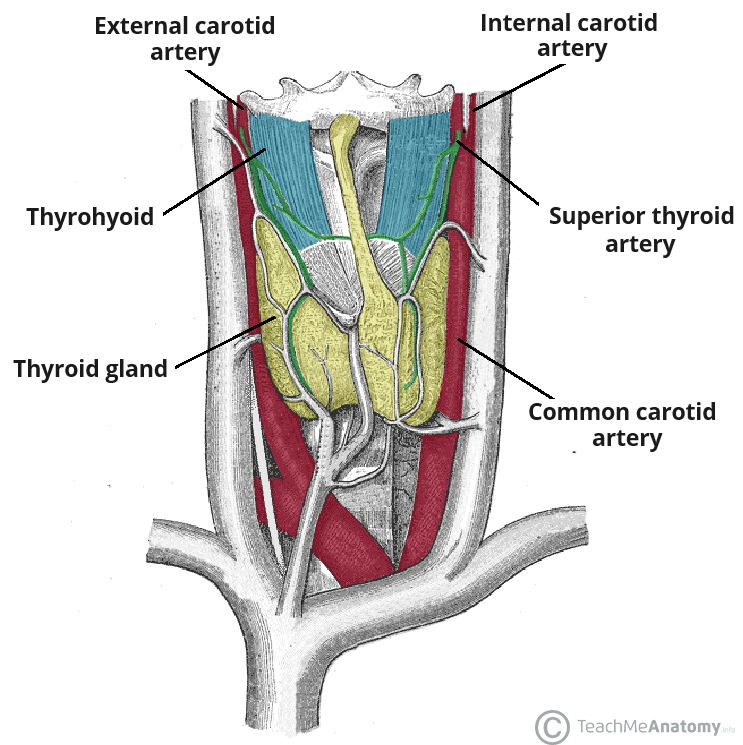
Lingual Artery (LA):
- Supplies the tongue.
Facial Artery (FA)
Medial Branch
- Ascending Pharyngeal Artery (AP)
:background_color(FFFFFF):format(jpeg)/images/library/13339/Posterior_meningeal_branch_of_ascending_pharyngeal_artery.png)
Posterior Branches (2)
- Occipital Artery (OA)
- Posterior Auricular Artery (PA):
- Supplies the external auditory canal.
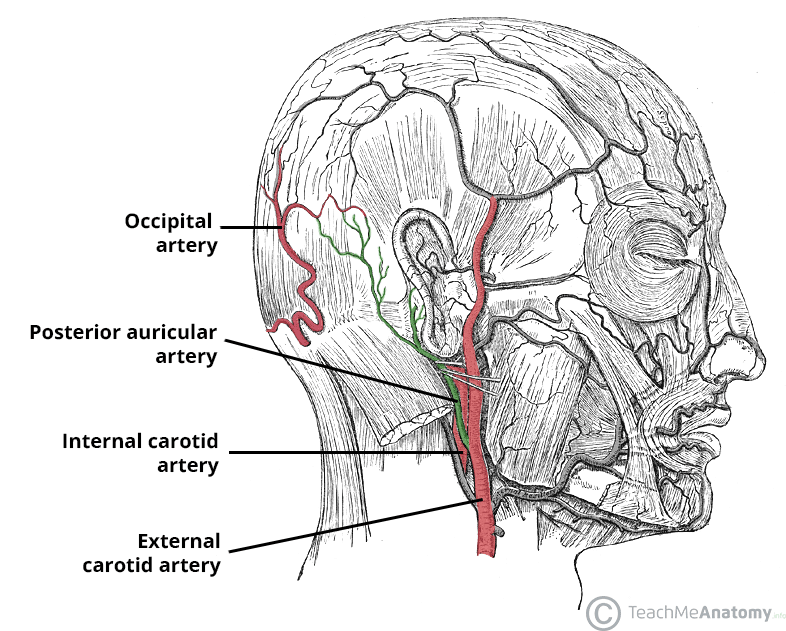
Terminal Branches (2)
Superficial Temporal Artery (STA):
- Supplies the scalp.
Maxillary Artery
Internal Jugular Vein
Tributaries to the Internal Jugular Vein (IJV)
- Retromandibular vein
- Common facial vein
- Lingual vein
- Superior thyroid vein
- Middle thyroid vein
- Inferior thyroid vein
*Note from an M2: This isn't that high-yield. You only need to know the big veins.

Major Tributaries of the IJV
- Superior thyroid vein
- Middle thyroid vein
- Inferior thyroid vein...
